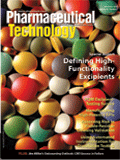Effective Responses to Ineffective Work
No matter how much we scamper about, the sheep just won't go where we want them to.
My cousin raises kelpies—Australian sheep dogs—along with a little flock of sheep to practice on, on a little farm somewhere in northern California.
I bring this up because the Judging Guidelines for National Kelpie Trials of the Working Kelpie Council of Australia make the following point: "Effectiveness is the criterion of the work and points should be allocated accordingly, i.e. if a dog goes over the sheep and they do not move to the desired position, points should be deducted for ineffective work."

Douglas McCormick
Most of us probably know intuitively what ineffective work is. I do like the kelpie definition, though: no matter how much we scamper about, the sheep just won't go where we want them to.
Managing performance
Ineffective work is a significant problem in pharmaceutical manufacturing, as consultant and author David Zuckerman pointed out during Pharmaceutical Technology's July Web seminar, "Performance Management for Manufacturing, Packaging, and CMC." Zuckerman is principal of Customized Improvement Strategies (St. Louis, MO, rx-business.com) and author of Pharmaceutical Metrics (published earlier this year by Gower Press).
Zuckerman offered a more sober, sheep-less definition: "Effective work is what materially contributes to delivering the product and achieving the goal. If the goal is to deliver your product on time and on budget, it's the things that are moving that forward. Ineffective work is essentially anything else."
That "anything else" embraces every time-sink you can think of. There's set-up time. There's the time lost switching gears as we move from one project or one task to another. There's time for reworking, queuing ("any time the product is sitting in the queue, any time it's not moving along through the process cycle"), and waiting (for materials, for instructions, for inspection, for equipment, for repairs). Any movement of material that isn't on a direct line to the customer can also contribute to ineffective work.
And what about inspection? "In a manufacturing environment," Zuckerman says, "we think of inspection as crucial, but, in fact, if you can find a way to do it right the first time and not have to inspect, you've saved an awful lot of time and trouble."
Half of everything is wasted
Studies of construction sites have found that ineffective work can account for as much as half of the total toil. Other studies, possibly apocryphal, give even higher proportions. As the fritter-factor goes up, so do the potential for recovering productivity. And the key to recovery is to identify strategies and metrics on four levels: financial, customer, internal performance, and organizational growth. At the financial level, the strategy might be low-cost production; the associated measure might be actual versus forecast unit cost. On-time, on-budget delivery might indicate how well you're serving your customer. The rejection rate might measure internal performance.
We all do some of these things. It is critical, though, to make sure that the measures reflect your most important goals, that they're reported systematically and regularly, and that they're shared with everyone who can make a difference.
"A small effort here to reduce ineffective work can reap huge gains in terms of the amount of effective work and the quality of the work you're doing. So using metrics to measure effective and ineffective work can be very, very powerful," Zuckerman said.
So with Labor Day and summer play behind us, it's time to pick up the stop-watch, tape-measure, and time-sheet.
I'll round up the sheep.
Douglas McCormick is editor in chief of Pharmaceutical Technology

Drug Solutions Podcast: A Closer Look at mRNA in Oncology and Vaccines
April 30th 2024In this episode fo the Drug Solutions Podcast, etherna’s vice-president of Technology and Innovation, Stefaan De Koker, discusses the merits and challenges of using mRNA as the foundation for therapeutics in oncology as well as for vaccines.
PacBio Chosen as Tech Partner for Global Alzheimer’s Disease Research Project
April 23rd 2025The project, the North African Dementia Registry, will unite multiple entities for the purpose of developing a comprehensive dataset to advance the research community’s understanding of Alzheimer’s disease and other dementias in diverse populations.
Drug Solutions Podcast: Gliding Through the Ins and Outs of the Pharma Supply Chain
November 14th 2023In this episode of the Drug Solutions podcast, Jill Murphy, former editor, speaks with Bourji Mourad, partnership director at ThermoSafe, about the supply chain in the pharmaceutical industry, specifically related to packaging, pharma air freight, and the pressure on suppliers with post-COVID-19 changes on delivery.